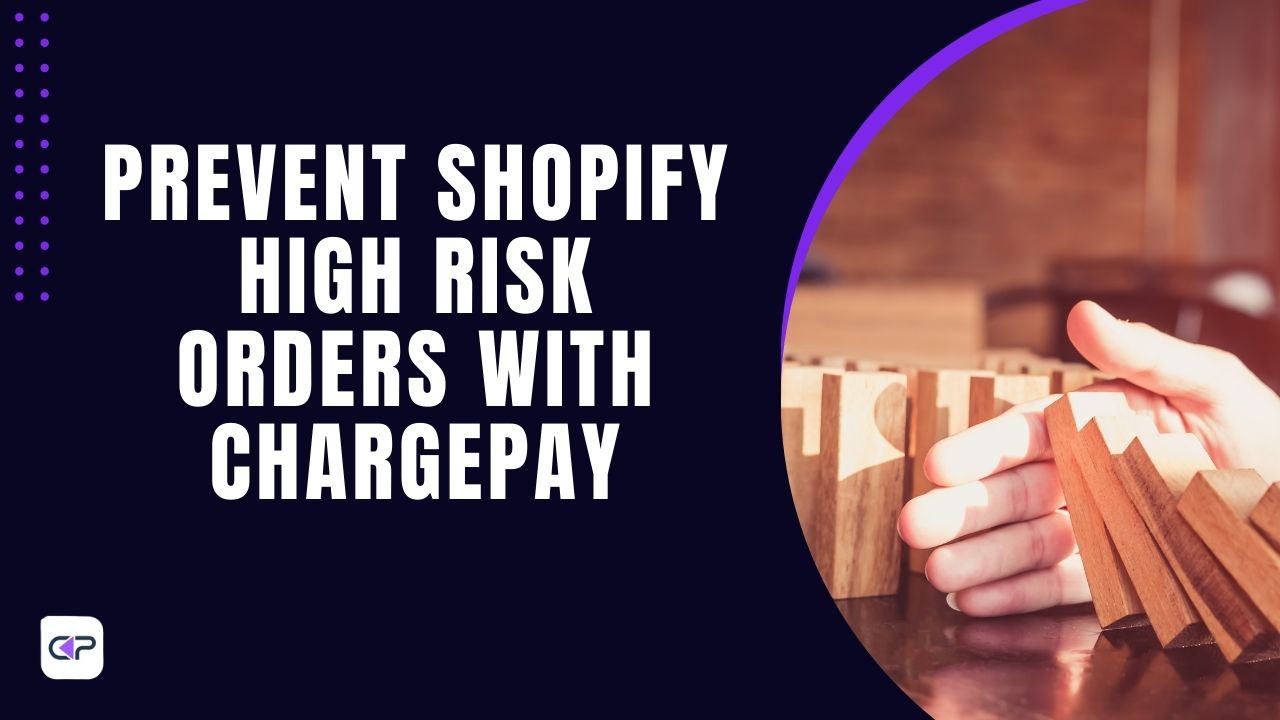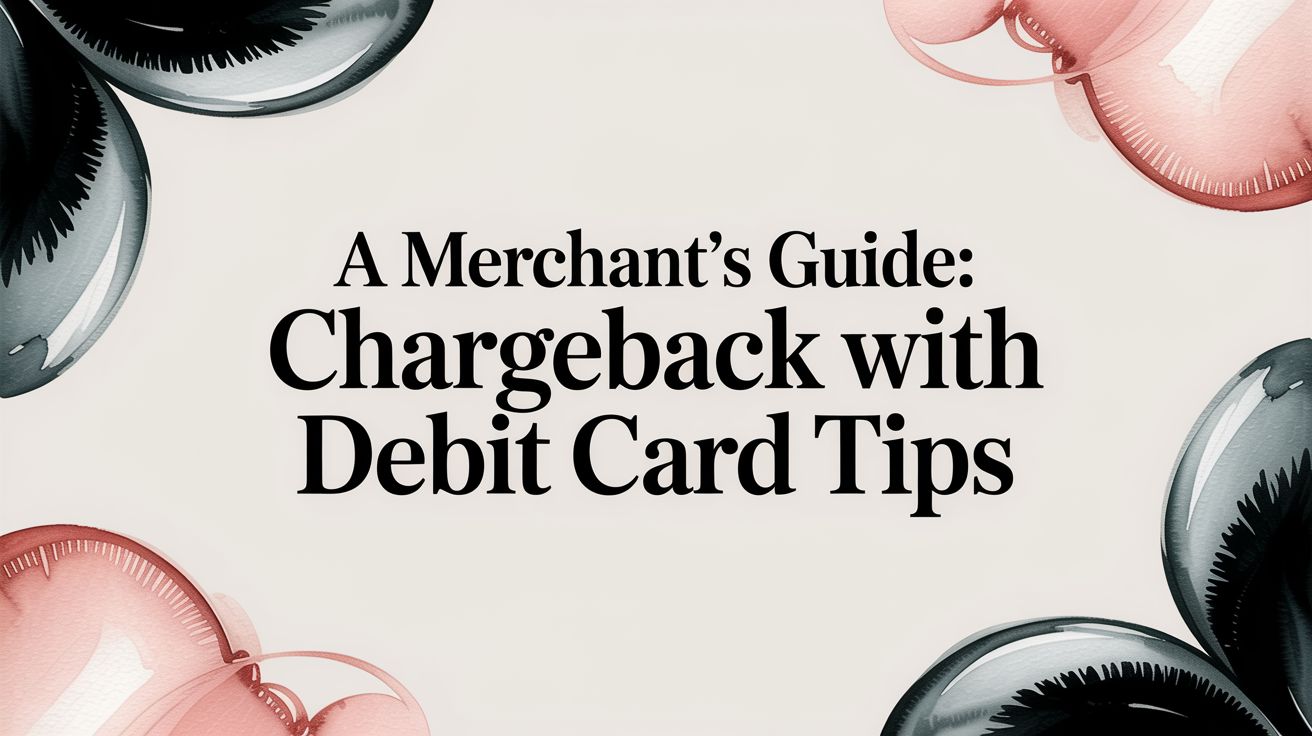
Are high-risk orders putting your Shopify store at financial risk?
Managing high-risk transactions is a critical challenge for eCommerce businesses, with fraud losses reaching $48 billion globally by 2023 (Juniper Research).
For Shopify merchants, high-risk orders often lead to chargebacks, increased operational costs, and strained relationships with payment processors. Especially when the chargeback rate on Shopify exceeds the industry threshold of 1%.
Our guide explores effective strategies to identify, review, and manage high-risk orders on Shopify, helping you minimize fraud, avoid disputes, and protect store revenue.
What is a High Risk Order on Shopify?
A high-risk order on Shopify refers to a transaction flagged due to potential indicators of fraud or disputes. Shopify utilizes automated fraud detection tools to analyze orders based on various factors, such as mismatched billing and shipping addresses, unusually high order values, multiple failed payment attempts, and suspicious customer behavior.
These orders mostly result in chargebacks, revenue loss, and disruptions to business operations.
Merchants operating in industries with high fraud rates or selling products that are highly likely to be resold on secondary markets are more likely to encounter high-risk orders.
Identifying these transactions early is crucial to safeguarding your business from financial and reputational damage.
Financial Implication of High Risk Orders
Although, the implications are of varying magnitude, listed below are the most critical ones.
1. Revenue Loss from Chargebacks
Chargebacks associated with fraudulent high-risk orders not only result in the loss of the sale amount but also lead to additional penalties from payment processors. On average, merchants pay $2.40 in fees for every dollar of chargeback losses.
2. Increased Operational Costs
Managing high-risk orders involves time-consuming manual reviews, fraud prevention measures, and dispute resolution efforts, which divert resources away from growth-focused activities.
3. Processor Penalties and Account Risk
Excessive chargebacks can result in penalties from payment processors and even account termination. Payment processors generally set a chargeback threshold of 1% of total transactions; exceeding this can damage your account health.
4. Damaged Customer Trust
If legitimate customers are mistakenly flagged as high-risk or subjected to order cancellations, it can harm their experience and reduce brand loyalty.
Understanding and addressing high-risk orders on Shopify is essential to maintaining a healthy bottom line and fostering trust with payment processors and customers alike.
Identifying and Reviewing High-risk Orders
Shopify equips merchants with advanced tools and features to streamline this process, allowing businesses to detect suspicious transactions and take proactive measures.
How to Identify High-Risk Orders
- Shopify’s Fraud Analysis Tool:
Shopify provides built-in fraud analysis powered by machine learning to flag high-risk orders. This tool evaluates various risk indicators, such as:some text- Mismatched billing and shipping addresses.
- Orders are placed using proxy IPs or locations known for fraudulent activity.
- Multiple failed payment attempts or unusual purchasing patterns.
- Customer accounts associated with prior fraudulent transactions.
- The fraud analysis generates a risk score for each order, categorizing it as low, medium, or high risk. Merchants can access a detailed breakdown of the flagged risks to assess the legitimacy of the order.
- Manual Order Reviews:
For flagged orders, manual review is an additional layer of protection. Steps to manually review high-risk orders include:some text- Verify email addresses, phone numbers, and IP locations for discrepancies.
- contact customers or their issuing banks to confirm payment authenticity.
- Look for unusual bulk orders or abnormally high-value purchases compared to typical customer behavior.
- Third-Party Fraud Detection Apps
Shopify integrates with third-party fraud prevention tool like ChargePay. These apps offer advanced fraud detection capabilities, providing merchants with actionable insights and recommendations for handling risky transactions.
Reviewing High-Risk Orders: Best Practices
- Enable Automated Risk Checks: Leverage Shopify’s automation to hold high-risk orders for manual review before fulfillment. This prevents the accidental processing of potentially fraudulent transactions.
- Establish Clear Review Protocols: Train your team to review flagged orders consistently, focusing on red flags like international shipping to fraud-prone regions or orders with unusually large quantities of the same product.
- Communicate Transparently with Customers: When verifying orders, maintain open communication with customers to avoid alienating legitimate buyers. Sending a polite verification email or call can resolve doubts without affecting customer trust.
- Integrate Shopify Flow for Automation: For Shopify Plus users, Shopify Flow allows you to create automated workflows to manage high-risk orders efficiently, such as auto-flagging suspicious transactions for review or sending notifications to your team.
By combining automated fraud detection with manual reviews, businesses can safeguard their revenue and maintain customer satisfaction.

Effective Strategies for Handling High Risk Orders
Handling high-risk orders effectively is essential for minimizing chargebacks, reducing fraud, and maintaining the health of your Shopify store. By adopting the right strategies, merchants can manage risky transactions without disrupting customer satisfaction or business operations.
1. Implement Risk-Based Order Management
Use Shopify’s fraud analysis to categorize orders into risk levels (low, medium, or high) and implement workflows tailored to each category. For high-risk orders:
- Require additional verification, such as ID or payment method confirmation.
- Hold fulfillment until the transaction is verified as legitimate.
- Use Shopify Flow (for Plus users) to automate these processes and minimize manual errors.
2. Leverage Shopify Payment Features
Shopify Payments integrates seamlessly with the platform to offer tools like chargeback protection and fraud prevention. Some features include:
- Chargeback Recovery Assistance: Shopify Payments provides documentation support for chargeback disputes, improving your chances of recovering lost revenue.
- Dynamic Fraud Filters: Set filters to automatically block orders that meet predefined fraud criteria, such as mismatched geolocation or flagged IP addresses.
3. Use Third-Party Fraud Prevention Apps
Integrate a fully-managed app like ChargePay from Shopify’s app store to enhance your fraud prevention capabilities. These tools offer advanced machine learning algorithms, dynamic risk scoring, and real-time fraud detection, helping you prevent disputes before they occur.
4. Optimize Payment Gateways
- Enable AVS (Address Verification System) and CVV checks to add extra layers of security during the payment process.
- Partner with Shopify Payments or other processors offering real-time fraud detection to reduce fraudulent transactions.
5. Regularly Monitor and Analyze Trends
Keep track of fraud patterns and high-risk order trends using Shopify’s reporting tools. Periodically update your fraud filters and policies based on these insights to stay ahead of emerging threats.
6. Enable Two-Factor Authentication (2FA)
For accounts requiring frequent high-value purchases, implement 2FA during checkout. This provides an extra layer of protection, ensuring that only legitimate customers complete the transaction.
merchants efficiently handle high-risk orders by combining Shopify’s tools, third-party integrations, and proactive risk management strategies. This approach minimizes fraud and chargebacks while protecting revenue and maintaining positive customer relationships.
Prevent High-risk Orders & Disputes with ChargePay
Managing high-risk orders and preventing disputes on Shopify becomes seamless with ChargePay. Our AI-powered solution integrates directly with Shopify to proactively identify and mitigate fraud risks before they escalate into chargebacks.
It enables merchants to flag suspicious orders and take decisive actions to protect their revenue by leveraging advanced fraud detection, real-time transaction analysis, and customizable risk scoring.
ChargePay minimizes chargebacks and automates the dispute resolution process, ensuring faster and more efficient outcomes. From evidence gathering to submission, our tools save you time and resources while improving your success rate in recovering lost revenue.
Protect your Shopify store with industry-leading chargeback prevention and management solutions.
Ready to take control of high-risk orders?







.svg)







.svg)
.svg)
.svg)